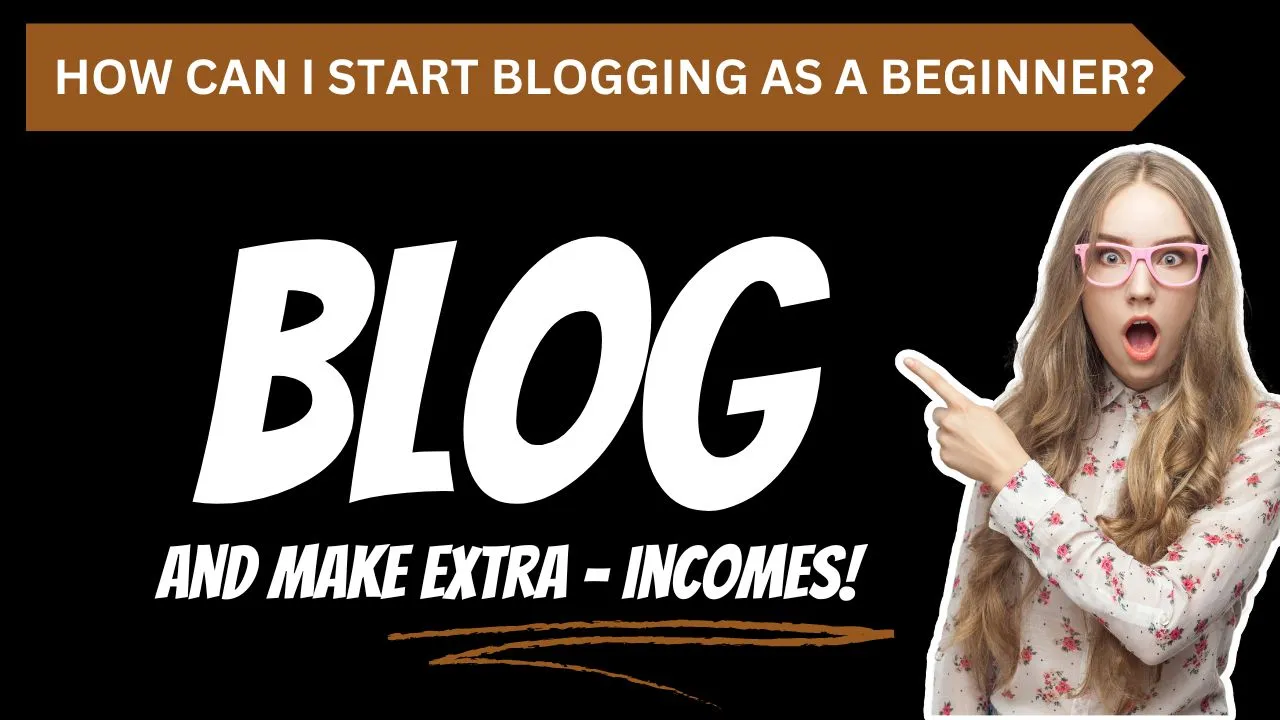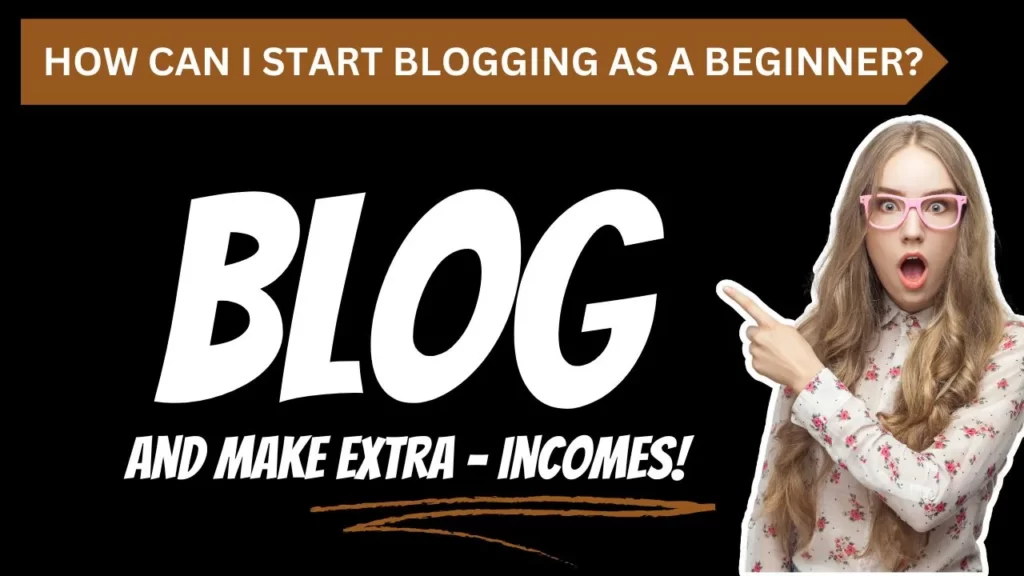
If you’re reading this, it’s likely that you’re contemplating the idea of starting your very own blog. Congratulations! Blogging presents an incredible opportunity to share your unique thoughts, ideas, and experiences with a global audience.
Whether your aim is to establish an online presence, position yourself as an expert in your field, connect with like-minded individuals, or earn ample revenue, creating a blog is an excellent avenue to achieve your aspirations.
However, where does one begin? With numerous platforms, tools, and strategies available, embarking on this journey can be overwhelming. Hence, we have curated this comprehensive beginner’s guide to Blogging 101.
We will walk you through all the essential aspects to get your blog up and running, right from selecting a platform to crafting your very first post. So, grab a pen and paper, settle in comfortably, and let’s delve into the world of blogging!
Table of Contents
Advantages of Blogging
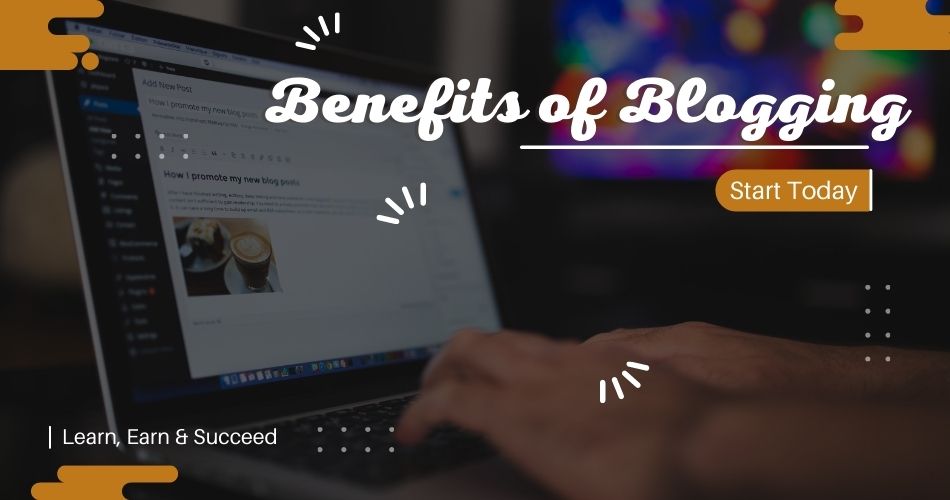
Blogging has witnessed a significant surge in popularity as a means for individuals to express their thoughts, share their experiences, present their ideas to the world, and earn money online.
But what are the actual benefits of starting your blog? Why should you venture into this creative realm? Here are a few compelling reasons:
Establishing an Online Presence: Blogging offers an excellent opportunity to position yourself as an authority in your field. By consistently producing high-quality content, you can establish credibility and attract a loyal readership who appreciates your valuable insights.
Connecting with Like-Minded Individuals: Blogging can also serve as a medium to connect with others who share your interests. Through writing about topics that hold personal significance to you, you can engage readers who are equally invested in these subjects, sparking meaningful conversations and fostering a community.
Sharing Your Experiences: Blogging provides a platform to share your experiences with the world. Whether you’re exploring new destinations, experimenting with recipes, or acquiring new skills, blogging enables you to document your journey and inspire others along the way.
Enhancing Your Writing Skills: Lastly, blogging presents an excellent opportunity to refine your writing abilities. Consistently producing content will not only help you become more comfortable with writing, but it will also allow you to develop your own unique style.
- Explore the Benefits of Blogging
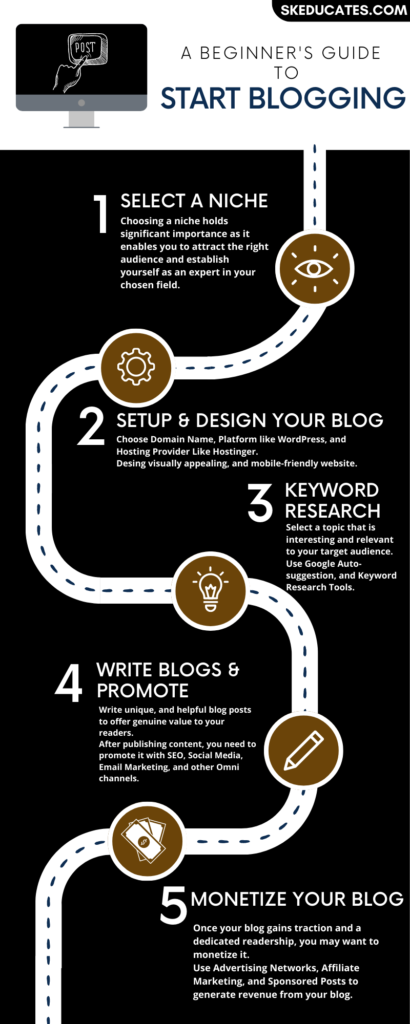
Share this Infographic by using the HTML code below:
<a href="https://skeducates.com/how-can-i-start-blogging-as-a-beginner/" target="_self"><img src="https://i0.wp.com/skeducates.com/wp-content/uploads/2023/05/how-i-can-start-blogging-as-a-beginner-skeducates.com_.png?resize=410%2C1024&ssl=1" alt="How can I start blogging as a beginner?"></a>
Selecting a Niche for Your Blog
Before diving into the world of blogging, it is essential to identify a niche for your blog. A niche refers to a specific topic or area of interest that your blog will focus on.
Choosing a niche holds significant importance as it enables you to attract the right audience and establish yourself as an expert in your chosen field.
Here are a few tips to guide you in selecting a suitable niche:
Pursue Your Passion: Blogging demands substantial time and effort, making it crucial to choose a topic you are genuinely passionate about. This passion will serve as a driving force, motivating you to consistently create compelling content.
Consider Your Target Audience: Contemplate the audience you wish to attract to your blog. What are their interests and needs? By selecting a niche that appeals to your target audience, you increase the likelihood of building a dedicated readership.
Research the Competition: Before finalizing your niche, conduct thorough research on existing competition. Are there already numerous blogs covering similar topics? If so, you may want to consider a sub-niche or an entirely different topic to ensure a unique offering.
Crafting a Blogging Strategy
Once you have determined your niche, it’s time to formulate a comprehensive blogging strategy. A blogging strategy outlines your goals, target audience, content plan, and promotional techniques.
Here are some key steps to get you started:
Define Your Goals: Establish what you wish to achieve with your blog. Is your objective to establish yourself as an expert in your field? Do you aim to build a community of loyal readers? Or perhaps your goal is to generate income? Defining your goals will enable you to develop a plan to effectively achieve them.
Identify Your Target Audience: Understand the demographics and interests of your desired audience. This understanding is crucial for creating content that resonates with them and captures their attention.
Develop a Content Plan: Once you have defined your goals and target audience, it’s time to create a content plan. This plan should outline the topics you will cover, the types of content you will produce, and the frequency at which you will publish new posts.
Devise a Promotion Strategy: To ensure your content reaches your target audience, you need to develop a promotion strategy. This may involve leveraging social media platforms, implementing email marketing campaigns, guest posting on other blogs, and exploring other avenues to expand your blog’s visibility.
Setting Up Your Blog: Choosing a Platform, Domain Name, and Hosting
With a well-defined strategy in place, it’s time to set up your blog. This involves three key components that require careful consideration:
Selecting a Platform: The first step is to choose a blogging platform that suits your needs. Popular options include WordPress, Blogger, and Squarespace. Research each platform’s features and functionalities to make an informed decision.
I recommend going with WordPress because it is easy to use, and comes with enormous plugins to make your job easier.
Choosing a Domain Name: Your domain name serves as your blog’s address on the internet. It’s important to select a name that is memorable, easy to spell, and relevant to your chosen niche.
Selecting Hosting Services: Hosting is the service that makes your blog accessible on the internet. Explore different hosting providers such as Hostinger, Bluehost, SiteGround, and HostGator to identify a reliable and suitable hosting solution for your blog.
PRO TIP: If you’re searching for a hosting provider that is reliable, and affordable at the same time, Hostinger is there for you! It is one of the cheapest hosting companies offering amazing hosting performance. I have been using Hostinger for more than 2 years, and till now, I am completely satisfied.
Want to enjoy a 20% discount on the already discounted Hostinger price? If yes, purchase your hosting through my referral link.
Designing Your Blog: Themes, Layouts, and Plugins
Once your blog is set up, it’s time to focus on its design. A visually appealing and user-friendly blog design enhances the overall experience for your readers.
Consider the following elements:
Choosing a Theme: Select a theme that aligns with your blog’s overall aesthetic and effectively communicates your content. Pay attention to layout, colors, fonts, and other visual elements to create an engaging and cohesive design.
Crafting a Layout: Design a layout that ensures ease of navigation and readability. Organize your content in a manner that enables readers to find information effortlessly and encourages them to stay longer on your blog.
Incorporating Plugins: Take advantage of plugins to enhance the functionality and user experience of your blog. Popular plugins like Yoast SEO, Jetpack, and Akismet offer features such as search engine optimization, security enhancements, and performance optimization.
Writing Your First Blog Post: Tips for Creating Compelling Content
Now that your blog is set up and designed, it’s time to write your first blog post. Creating captivating and informative content is crucial to engage your audience. Consider the following tips:
Choose an Intriguing Topic (Keyword Research): Select a topic that is interesting and relevant to your target audience. Your passion for the subject will reflect in your writing and capture readers’ attention.
Read this article to explore free methods to find amazing keywords for your blog.
Craft a Catchy Headline: The headline is the first impression readers have of your post. Create a headline that is catchy, captivating, and compels readers to click and read further.
Adopt a Conversational Tone: Blogging is inherently more informal than other forms of writing. Use a conversational tone, employing short sentences and paragraphs. Avoid jargon or technical language that may alienate readers.
Utilize Multimedia Elements: Incorporate images, videos, and other media to enrich your blog post. Visual aids not only make the content more engaging but also increase its shareability on social media platforms.
Explore Top 5 Free Keyword Research Tools Trusted for SEO in 2023
Promoting Your Blog: Leveraging SEO, Social Media, and Email Marketing
Creating exceptional content is only half the battle. To attract readers to your blog, you need to implement effective promotional strategies. Consider the following key methods:

Search Engine Optimization (SEO): Enhance your blog’s visibility in search engine results by optimizing your content. Research relevant keywords, incorporate them naturally into your posts, and ensure your blog has proper meta tags, headings, and descriptions.
- Learn what is SEO explained by Neil Patel.
Social Media Engagement: Leverage the power of social media platforms to promote your blog. Identify the platforms where your target audience is most active and create engaging posts, share your content regularly, and interact with your followers.
Email Marketing: Develop an email list by encouraging readers to subscribe to your blog. Utilize email marketing campaigns to deliver valuable content directly to their inboxes, keeping them informed about your latest posts, news, and updates.
Related Articles on Email Marketing:
- 5 Powerful Email Marketing Tips to help your business grow.
- Discover the Types of Email Marketing
- Email Marketing Best Practices
- How to execute email marketing yourself?
Monetizing Your Blog: Exploring Revenue Streams
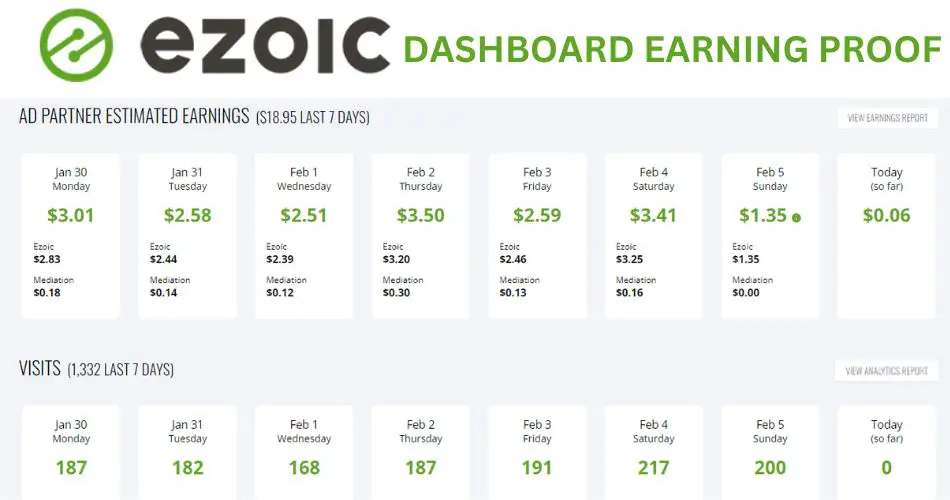
Once your blog gains traction and a dedicated readership, you may want to monetize it. Explore the following avenues to generate income:
Affiliate Marketing: Join affiliate programs and promote products or services relevant to your niche. Earn a commission for each successful referral or sale made through your affiliate links.
ALSO READ: How to start affiliate marketing as a beginner? 6 Easy Steps.
Advertising: Display advertisements on your blog to generate revenue. Partner with advertising networks like Google AdSense or work directly with advertisers who align with your blog’s content. For extra revenue, you can join amazing networks like Ezoic.
- Related: How to get Ezoic Approval easily?
Sponsored Posts: Collaborate with brands and write sponsored posts that feature their products or services. Ensure transparency by clearly disclosing sponsored content to your readers.
Common Blogging Pitfalls to Avoid
Blogging comes with its share of challenges. Avoid these common mistakes to ensure your blog’s success:
Inconsistent Posting: Maintain a consistent posting schedule to keep your readers engaged. Regularly provide fresh content to establish trust and loyalty among your audience.
Mediocre Content Quality: Set high standards for your content. Deliver well-researched, well-written, and valuable posts that resonate with your readers. Quality content keeps visitors coming back for more.
Neglecting Promotion: Don’t solely rely on great content to attract readers. Actively promote your blog through various channels, including social media, SEO, and email marketing.
Lack of Planning: Failing to plan your blog content can lead to disorganized and unfocused posts. Create an editorial calendar to ensure a consistent flow of topics and ideas.
Ignoring SEO: Search engine optimization (SEO) is crucial for attracting organic traffic to your blog. Neglecting SEO best practices can hinder your blog’s visibility in search engine results.
Overlooking Proofreading and Editing: Grammatical errors, spelling mistakes, and poor editing can make your blog appear unprofessional. Always proofread and edit your posts before publishing.
Lack of Visual Appeal: A blog with walls of text can be visually unappealing. Incorporate images, infographics, and other visual elements to enhance the readability and attractiveness of your posts.
Neglecting Reader Interaction: Engaging with your readers is essential for building a community around your blog. Respond to comments, encourage discussions, and consider reader suggestions for future content.
Ignoring Analytics: Monitoring and analyzing your blog’s performance using tools like Google Analytics is crucial for understanding your audience, identifying popular topics, and making data-driven decisions.
Overloading with Ads: Excessive advertising can annoy readers and distract them from your content. Use ads sparingly and ensure they are relevant and unobtrusive.
Lack of Originality: Creating unique and original content is essential for standing out in the blogosphere. Avoid copying or duplicating content from other sources.
Conclusion on ‘How can I start blogging as a beginner?’
Embarking on a blogging journey can be an enriching experience. By following the tips outlined in this comprehensive guide, you are well-equipped to start your blog successfully. Remember to choose a niche that ignites your passion, develop a solid blogging strategy, and consistently deliver high-quality content.
With dedication and perseverance, your blog can become a valuable resource for your readers while offering potential income opportunities.
Good luck with your blogging endeavors!

